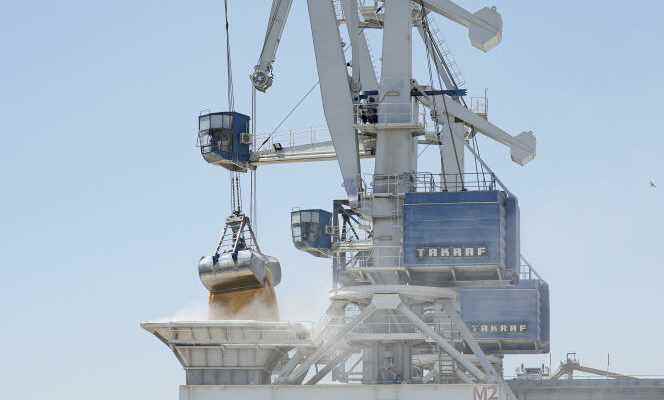In a few weeks, panic spread like wildfire: was the war in Ukraine, reputed breadbasket of Europe, going to result in a shortage of grain for the rest of the world? These concerns have sparked a flurry of speculation in highly financialized agricultural commodity markets, driving grain prices to unprecedented levels – and raising fears that global food security is at risk.
Four and a half months after the start of the conflict, the fever remains high, but it has subsided a little. Friday 1er July, a tonne of common wheat, to be delivered in September, traded at 334 euros on the Euronext European market. To be compared with the historical record reached in mid-May, at 438 euros per tonne. Since this peak, the decline is therefore nearly 20%. On the other side of the Atlantic, the decline is even more marked. On the Chicago Stock Exchange, the price of a bushel of common wheat fell to 8.40 dollars (8 euros) in early July, against 13.60 dollars at the height of the market surge. A price that corresponds to the level before the invasion of Ukraine by Russian troops.
The cooling of the markets is not limited to bread wheat. The prices of corn, but also oilseeds such as rapeseed or soybeans, follow trajectories similar to that of the emblematic cereal. Rapeseed, which was trading at 881 euros in April, lost nearly 200 euros per ton: for Arthur Portier, of the Agritel cabinet, “This marked decline is not so much explained by demand that has really changed, but rather by signs of panic on all financial markets”.
“Disconnection from reality”
The sudden rise in inflation and the increase in interest rates pose a risk of recession or, at the very least, raise many questions about the global economic health. Analyzes that lead investors to reconsider their position. The decline in oil prices, but also the correction in metal prices or stock market values illustrate this. Agricultural raw materials are no exception to this movement of nervousness. When Russian troops entered Ukrainian territory on February 24, pitting two cereal heavyweights against each other, the uncertainty associated with this situation sent grain prices skyrocketing.
“From operator memory, the situation was unprecedented. There were no landmarks. And we were starting from a situation where prices had already risen a lot following massive purchases from China during the 2020-2021 campaign, explains François Luguenot, one of the authors of the annual Cyclope report on raw materials. Since the Covid-19 crisis, states have poured trillions into the economy. This money has to go somewhere. This monetary creation was one of the factors keeping prices at levels unrelated to value. » Financial speculation accentuated price variations.
You have 56.23% of this article left to read. The following is for subscribers only.
